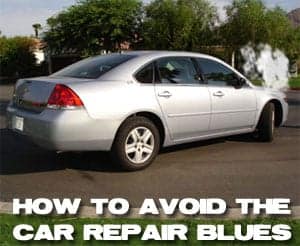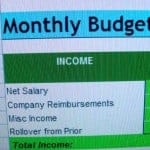I‘ve written on this site about the importance of planning ahead for unforeseen circumstances multiple times. It’s important to have adequate life insurance and long term disability insurance in case you were to die or get hurt in an accident. It’s also a good idea to have health insurance in case you end up having an unplanned health event, as my wife did a few years ago. She ended up being in the hospital for almost a month with a blood clot, and she ended up receiving over $250,000 in medical care! Thank goodness we had planned ahead and made sure to pay for good health insurance through my workplace.
Another area that I’ve talked about where you can plan ahead is just by having an emergency fund in place to help you in case of any other unplanned expenses, from car repairs to job losses. We have a large emergency fund to cover all expenses from a furnace needing to be replaced, to a job loss. We also have several other smaller emergency funds for specific purposes that allow us to plan for other scenarios.
Over the last few days I’ve had to put my preaching into practice as I began to have car trouble and found that we would be needing those funds we had stashed away for a rainy day.
Planning Ahead For Specific Unplanned Events

We don’t always know that we’re going to have an expenses in a certain areas, but in others we can reasonably be sure that we will have expenses that we’re going to have to deal with eventually. My car is a pretty good example. We know that we’re going to either need a new car, or to repair our current car within a time period of the next few years. Because of that we setup a budget category and a Capital One 360 savings account to save cash for our next car. That emergency fund also does double duty and acts as a car repair fund in case our current car should ever have car trouble.
Up until a couple of years ago our car fund had quite a bit of money in it. Then we purchased my wife’s new Honda CRV for cash, and the account was drained down to a couple hundred dollars. The car was paid with cash and we had no payment. We then started to replenish the car fund with enough money to cover most car repairs, a couple thousand dollars. We’ve stopped giving more to that account for now to save as fast as we can for a house down payment, but we have enough in there to cover car repairs.
So we have identified an area where we know we’ll have a future need, and we’ve started saving for that need. This week that planning has had to come into play.
Car Troubles
Earlier this week I had a weird occurrence in my car on the way home from work. Out of the blue my car started dinging and the information panel said that my engine was overheating and that I needed to stop the car immediately. I had been having a couple of other weird electrical issues in the car, so I stopped the car, turned it off and then re-started it thinking maybe the issue would go away. It did, but only for a couple of days.
Last night on the way home from work my car started dinging and warning me about impending engine overheating again. Again thinking it might be just a weird electrical issue I pulled over and turned the car off. But this time when I restarted the car and continued on my way the dinging continued. This time the car also started to feel different, it started to have less power and the steering started feeling sluggish. I could tell something was wrong.
I limped my way home and dropped my car off at a trusted local service station. They took a look at the car that evening and determined that there were $500 in repairs and maintenance that were needed. The cooling system needed to be flushed, a new thermostat installed and a couple of other things. Thankfully there wasn’t more work to be done, and I didn’t blow the engine before I made it to the service station.
Emergency Funds Made This Car Repair Simple
Because we had an emergency fund I was able to take the money out of our Capital One 360 goal based savings account, and pay for the repairs in cash. Problem solved with little or no mess.
If we hadn’t saved that money months ago (and our other emergency fund) we would now most likely be putting the repair on a credit card. While there isn’t necessarily anything wrong with putting things on your card, if you don’t plan ahead problems have a way of multiplying. Before you know it you’re not able to pay the card off every month and debt starts to pile up.
So now that we’re in the midst of savings as fast as we can for a home down payment we have less of an auto emergency fund, but it still has enough to get us by in case we have another issue. That gives me peace of mind.
Do you have or setup goal based savings accounts for specific purposes like we do? How do you pay for unexpected expenses like my car repair?


Agreed. I keep about 10k in liquid cash in case I need to make a big purchase. Veyr helpful :)
I think having goal based accounts are important. It gives you a purpose and that is key when saving money.